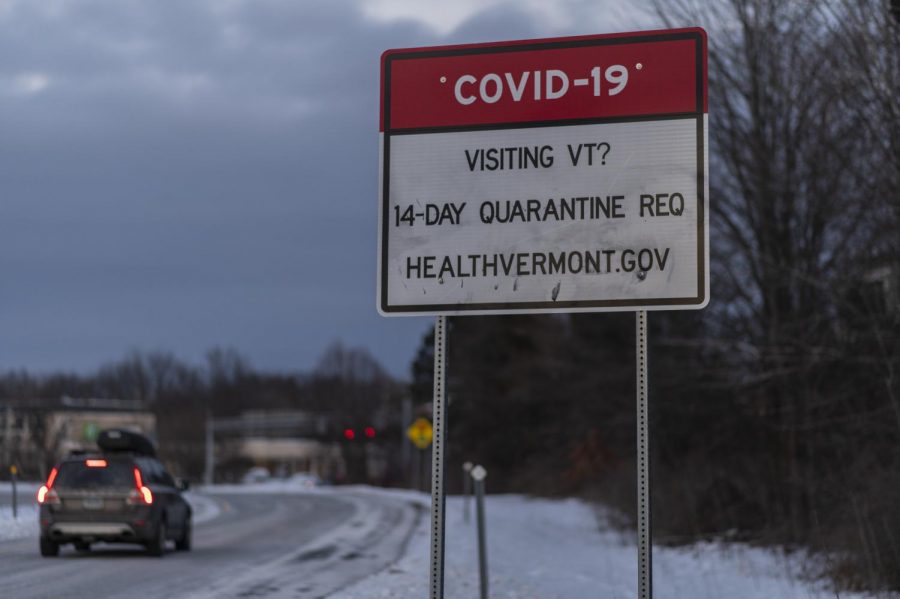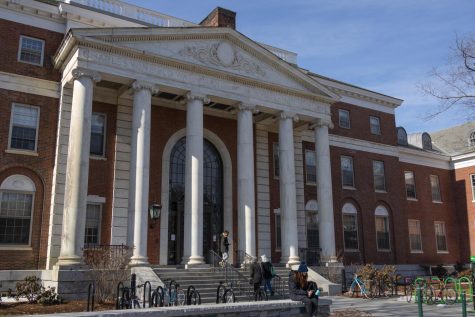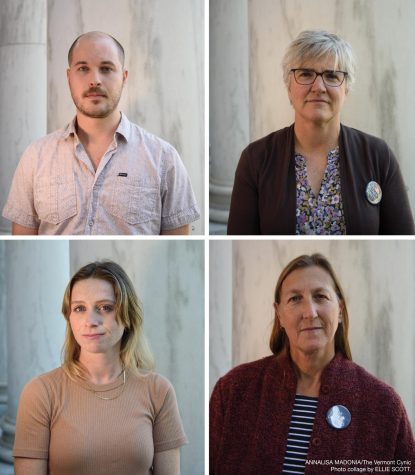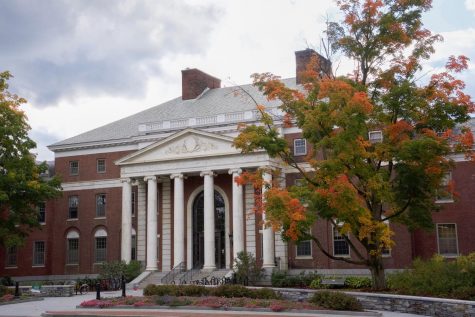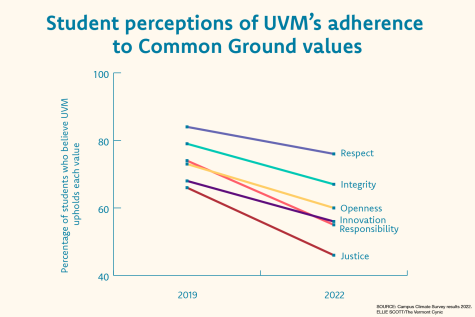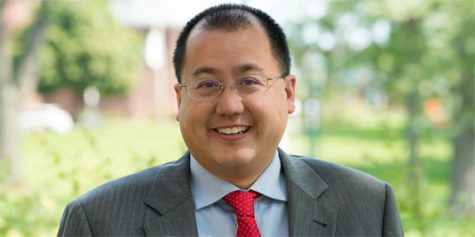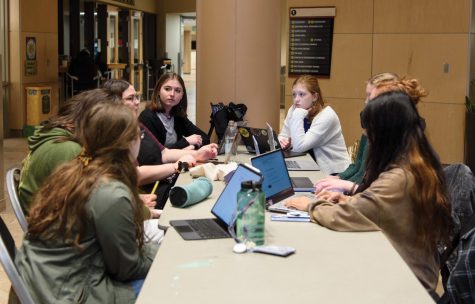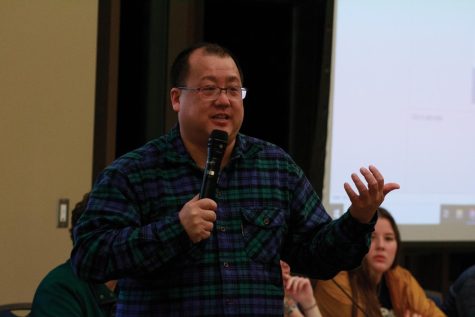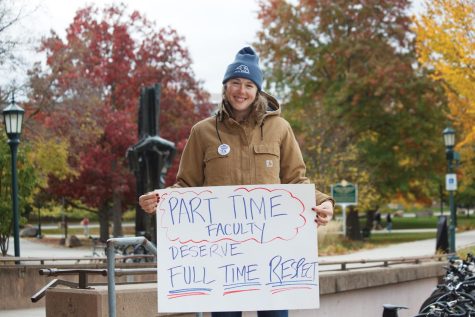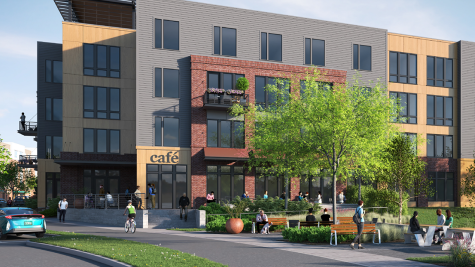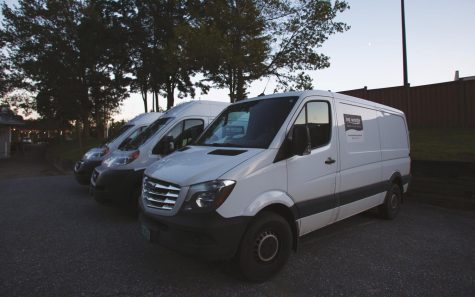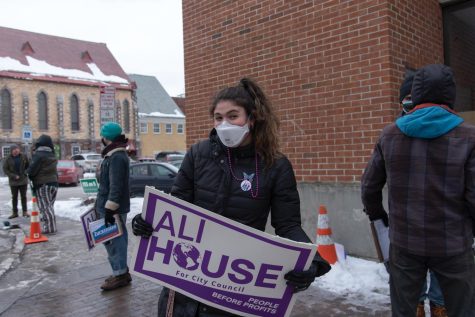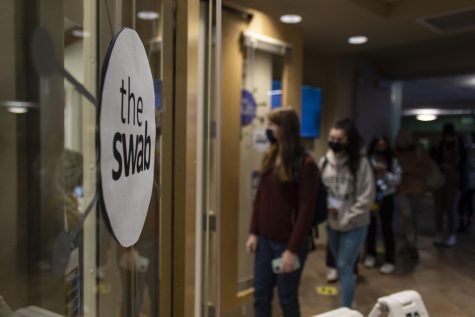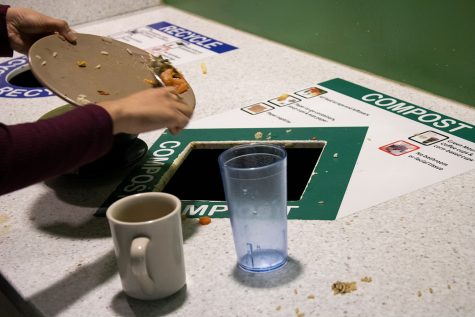UVM to maintain fall semester COVID regulations amid rising cases
The state installed COVID-19 sign stands off of exit 14E to let out-of-state travelers know the Vermont guidelines for COVID Jan. 25. A 14 day quarantine is required of all out-of-state travelers among other safety precautions.
Despite rising cases of COVID-19 in Vermont and an uptick in cases at the end of last semester, UVM will maintain the same strategy for containing the coronavirus during the spring semester.
Although UVM started the fall semester with a very low prevalence of COVID-19 on campus, cases increased exponentially in the weeks before Thanksgiving, going from an average of just one new case a week in October to 42 new cases in the third week of November alone.
However, UVM officials said they are still sticking to the same mitigation strategies used at the time cases increased in November.
“We are pursuing the same successful containment strategy as last fall,” UVM spokesperson Enrique Corredera said. “Testing, isolation of positive cases, contact tracing and quarantine of close contacts.”
As students have trickled into Burlington throughout January, the prevalence of COVID-19 cases is already reaching record-breaking highs in the UVM community.
From Jan. 18 through Jan. 24, 31 students tested positive for the virus out of only 3,050 students, roughly a third of UVMs undergraduate population.
In contrast, only ten students tested positive for the virus in the first week of classes in the fall semester, between Aug. 27 and Sept. 2, out of 11,466 test results received.
Burlington Mayor Miro Weinberger acknowledged this difference in a Jan. 23 press conference about UVM’s back-to-school plans.
“The challenge is we have to do this again,” said Weinberger. “And it’s going to be harder this time because there’s a much higher prevalence of the virus in the community than there was in the fall.”
Corredera stressed that the school is working closely with the Governor’s office, the Vermont Department of Health and the city of Burlington to ensure students’ safety.
According to Derr, the University had received a “good response from [pre-arrival testing] already,” as of Jan. 23.
Additionally, Derr noted that tents placed around campus will be a way for students to interact informally, which he said students have expressed interest in.
“What we’ve done is put Adirondack chairs around coffee tables on either end of the tables,” Derr said. “People can sit the appropriate distance apart, with masks, but have a way to interact that they couldn’t otherwise do in the fall because we had to use those tents for other reasons.”
SGA Vice President Peter Lally is a member of the UVMStrong Advisory Committee which helps make decisions related to COVID-19. Although Lally noted the difficulty of rising cases, he said he’s still optimistic about the semester.
“I definitely think it’s a different time with the spike, it’s unpredictable,” Lally said. “But I think having the pre arrival test and quarantining for on-campus will help.”
As cases rise, UVM has not indicated a specific threshold of case numbers for ending in-person learning.
Lally mentioned that although there is no exact number, if there is not enough quarantine space as the semester goes on, the school would “definitely have to look into” another strategy.
Some students are currently quarantining at a nearby hotel, The DoubleTree, which could potentially make additional quarantine space, he said.
SGA is also looking into ways students can safely get out of their dorms rooms more frequently, such as introducing more study spaces and making the hours at the library longer.
“The mental health impact of COVID-19 is staying inside all the time and only seeing like one space for the whole day where you live and also do classes,” Lally said. “It takes a toll so we’re hoping to get more study spaces around campus, and advertise those so people know about them, which I think is also going well.”


